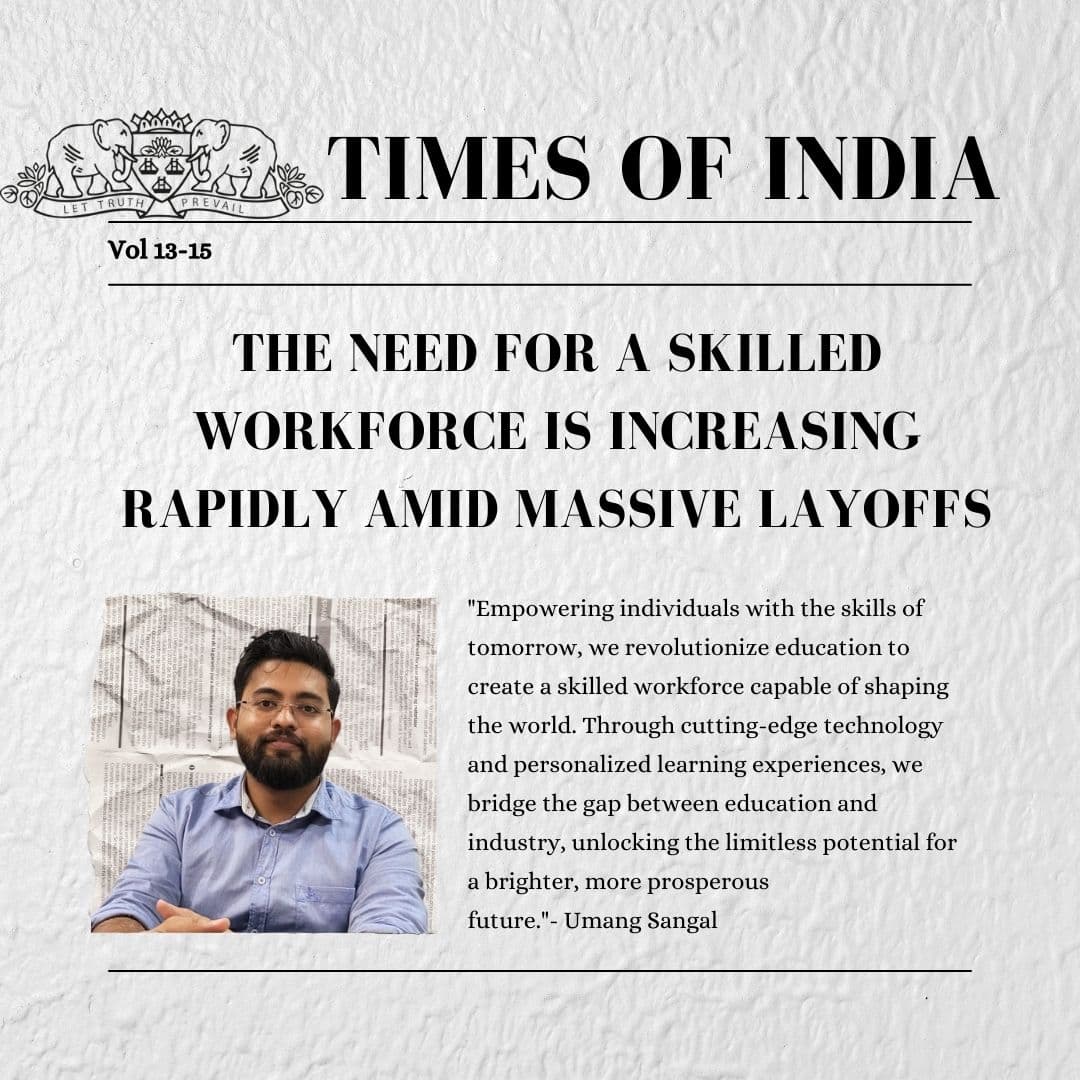The need for a Skilled workforce is increasing rapidly amid massive layoffs

Introduction
In recent years, the global workforce has witnessed significant changes and challenges. One of the most pressing issues has been the occurrence of massive layoffs in various industries. However, amidst this turbulent landscape, it becomes evident that the need for a skilled workforce is increasing rapidly. A highly skilled workforce is crucial in the face of massive layoffs and the benefits it brings individuals and society together.
The changing landscape of employment:
The modern job market is undergoing a rapid transformation. Technological advancements, such as automation, artificial intelligence, and robotics, have altered traditional job roles, rendering some obsolete. As companies strive for increased efficiency and cost-effectiveness, many tasks that were once performed by humans are now being automated.
Industry disruptions and job insecurity:
Disruptions in traditional industries, driven by factors such as changing consumer preferences, market trends, and economic fluctuations, often lead to layoffs on a massive scale. Workers in declining sectors find themselves facing job insecurity and a pressing need to acquire new skills to remain employable. It is during such transitions that a skilled workforce becomes essential for reskilling and reemployment.
Enhancing economic resilience:
A highly skilled workforce can help mitigate these effects. Skilled workers possess transferable skills that enable them to adapt to changing job markets and find alternative employment opportunities. Their ability to contribute to multiple industries and sectors enhances economic resilience. Moreover, a skilled workforce attracts investments, as companies seek regions with a talent pool capable of meeting the demands of emerging industries. As economies recover, it becomes evident that the jobs lost may not return in the same capacity, requiring a shift in skills and expertise to adapt to the evolving market demands.
To address the need for a skilled workforce amid massive layoffs, several steps can be taken:
Upskilling and reskilling programs:
Educational institutions and employers can invest in programs that provide training and education opportunities to help workers acquire the skills needed in emerging industries. These programs can include vocational training, online courses, apprenticeships, and professional development initiatives.
Fostering a culture of lifelong learning:
To meet the demands of the evolving job market, individuals must embrace lifelong learning. Continuous upskilling and reskilling are crucial for staying competitive and adaptable. Governments, educational institutions, and organizations should collaborate to provide accessible and affordable learning opportunities, including online courses, vocational training, and apprenticeships.
Bridging the skills gap:
There is a pressing need to bridge the gap between the skills possessed by the workforce and those required by employers. Governments and educational institutions must work together to identify emerging skill requirements and develop relevant educational programs. Public-private partnerships can facilitate internships, on-the-job training, and mentorship programs to provide practical experience and ensure a smooth transition into the workforce.
Emphasising soft skills development:
While technical skills are crucial, soft skills such as communication, collaboration, adaptability, and critical thinking are becoming increasingly valued. These skills enable individuals to thrive in diverse work environments, effectively navigate change, and contribute to team success. Educational curricula should incorporate the development of soft skills alongside technical training.
Supporting career guidance and counseling:
Access to accurate information about job market trends, emerging industries, and in-demand skills is essential for individuals navigating career choices. Career guidance and counselling services play a pivotal role in helping workers identify their strengths, explore potential career paths, and make informed decisions. By providing guidance, individuals can align their skills and interests with the demands of the job market, reducing the risk of unemployment due to mismatched skill sets.
Conclusion:
In a world marked by frequent disruptions and massive layoffs, the need for a skilled workforce has become more evident than ever before. As industries continue to evolve, individuals and society must adapt to the changing demands of the job market. By embracing lifelong learning, bridging the skills gap, and emphasizing technical and soft skills development, we can empower individuals to thrive with uncertainty, drive economic growth, and create a prosperous future for all.
